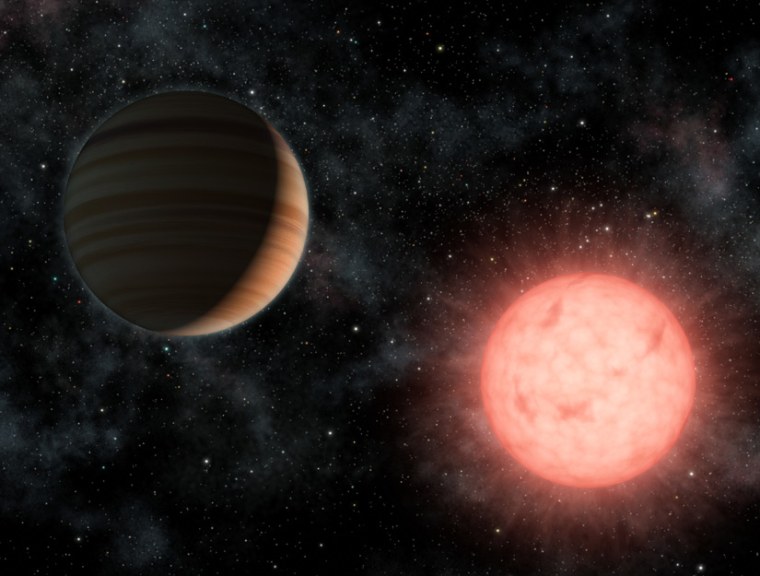Scientists have found hundreds of Jupiter-class planets circling stars beyond the solar system, yet none of them share our Jupiter's proclivity for moons. The problem may not just be that extrasolar moons are hard to find.
New research shows they're unlikely to exist — at least around the vast majority of extrasolar planets discovered so far.
A study by astronomer Fathi Namouni, with the Universit de Nice in France, shows that as a giant Jupiter migrates inward toward its solar system, any moons in tow would be stripped away or destroyed by the gravitational tug-of-war between the planet and the mother star.
"Moons become unstable as the planet's sphere of influence shrinks," wrote Namouni.
These so-called "hot Jupiter" planets — so named because of their large size and close proximity to their parent stars — dominate the list of exoplanets found so far.
Computer simulations show that these planets' gravitational grip on any formed or forming moons would falter in the face of the parent star's more powerful gravity field. Outlying moons would be catapulted beyond a planet's orbit, while inner moons would smash into the planet and be destroyed.
Despite the unlikely outlook, astronomers say they'll keep searching for moons. It's an opportunity to refine techniques for when planets in more hospitable orbits are discovered. For while gaseous giants like Jupiter may be inhospitable for life, an Earth-sized rocky moon in tow may be well-suited for life to form.
"Hot Jupiters were never our first choice to look at, but that's all we've had," astronomer David Kipping, with University College London, told Discovery News. "It would be really exciting if the Jupiter was at the same distance as Earth. Then all those moons would be in temperate regions."
"Any point that helps us constrain our models is extremely, extremely helpful," added Lisa Kaltenegger, a research associate at the Harvard-Smithsonian Center for Astrophysics. "I'm not too worried about the (research) paper because those moons probably wouldn't be habitable in the first place."
Scientists hope to have a better list of potential places to look for life from an ongoing survey by the Kepler space telescope.
Namouni's research is being published in the Aug. 20 issue of The Astrophysical Journal Letters.
